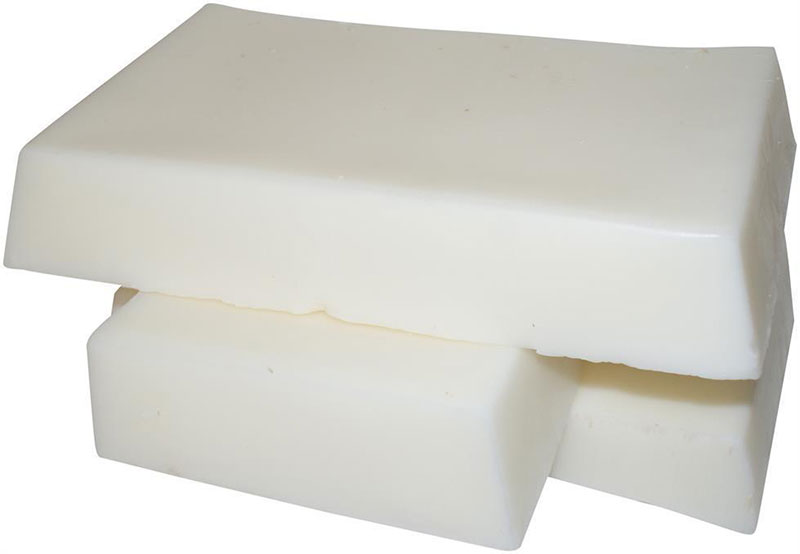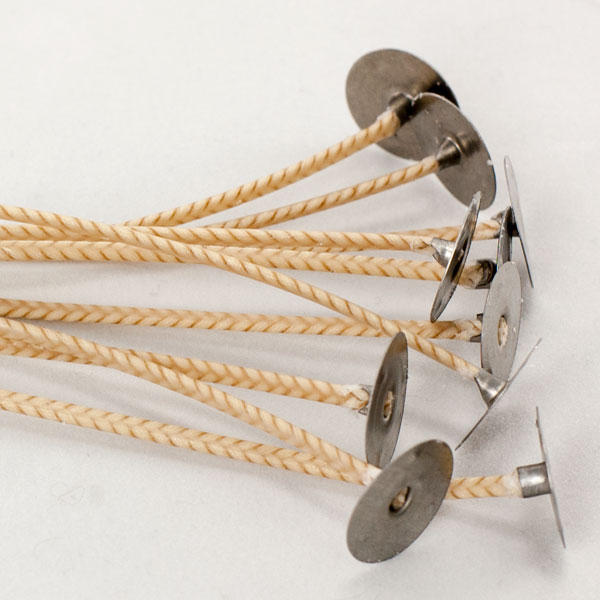Buy our waxes
The wax-perfume mixture is poured by hand in our workshops. We use a mixture of mineral wax and vegetable wax. *
For what ?
▪ The mineral wax helps prevent the evaporation of the perfume when the candle is extinguished. The diffusion of the fragrance thus remains intense, each time you light your candle, throughout its lifespan.
▪ We incorporate vegetable soy wax into the mixture to soften the texture.
▪ Unless otherwise advised by our customer, we avoid using 100% vegetable waxes. They burn too quickly and do not retain the fragrance, the diffusion of which gradually disappears after the first uses of the candle.
Mixed wax
Our exclusive wax recipe, which combines vegetable and mineral, intensely diffuses our fragrances during combustion while it best preserves them cold. The intensity of the fragrance thus remains intact throughout the life of your candle. This wax blend is designed to emit the least amount of carbon dioxide during combustion.
Mixed waxes will provide a perfectly smooth surface and may become colored.
Vegetable wax
Coconut wax is a 100% vegetable wax. Our new coconut wax recipe, entirely plant-based, will diffuse our fragrances naturally. Does not provide a smooth surface appearance and does not retain fragrance when cold. Contrary to popular belief, vegetable waxes emit more carbon dioxide than mineral waxes.
vegetable waxes are polymorphic. Their structure means that they react according to atmospheric conditions (the change from hot to cold for example) which sometimes results in icing marks, cracks or flowering. This only causes aesthetic defects, but does not change the quality of the product.
Cotton wick
100% cotton wicks. We use wicks adapted to the dimensions of the container, the wax and the perfume chosen. This allows for an optimum lifespan of the candle while ensuring regular combustion of the wax. Origin Germany. We recommend this bit.
Wooden wick
Crackling wooden wicks. You should know that these wicks are very noisy when burning. Origin United States.
Which wax to choose?
Many brands today highlight the 100% plant-based composition of their candles. However, major brands have always used mineral wax blends. Is vegetable wax really an asset for consumers? Here is a reminder of the differences between mineral and vegetable waxes.
In terms of health,
ADEME (environment and energy management agency, attached to the Ministry of Ecology) carried out a detailed study in July 2017 on scented candles and incense.
The published report concludes that normal use (around 4 hours per day) of scented candles is safe for health.
In this report, no distinction is made between candles containing exclusively vegetable waxes and candles containing mineral waxes. It is therefore not possible to claim, as some brands do, that candles made from 100% vegetable waxes are “better for your health”. There is no difference between mineral waxes and vegetable waxes.
For your health, the points to watch out for are:
- smokeless burning: remember to cut the wick, clean it before lighting and smother the candle with a lid rather than blowing it out when you want to extinguish it;
- good ventilation of the room: remember to ventilate your interior daily.
It is therefore not the type of wax but the quality of the waxes chosen and the expertise of the wax maker in adjusting his candles which will be decisive.
In terms of quality
When it comes to fragrance diffusion, mineral waxes are undoubtedly better than vegetable waxes.
This is why we have chosen to use and recommend our mixture of the two waxes to combine the softness of the plant and the diffusion of the mineral.
Aesthetics
The problem of wax coming off the glass...Indeed, glass has a melting point above 1000° and wax melts from 50°. The glass is therefore insensitive to a temperature variation between 0° and 40° while the wax reacts strongly.
So when the temperature drops, the wax becomes harder and contracts and when the temperature increases, it increases in volume, while the glass does not undergo any variation. When you pour a candle, the wax is liquid, it cools quickly but remains around 25°. As soon as it is stored at a temperature below 20°, it shrinks and the glass separates. If you try heating the glass slightly, the phenomenon disappears because the wax re-adheres perfectly to the glass.




